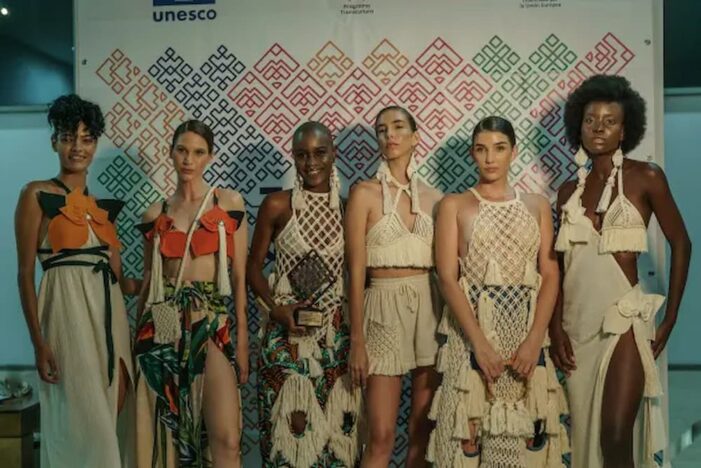Photo courtesy: UNESCO / H. Bejerano
By UNESCO
The Caribbean is known for its vibrant fashion, which is influenced by a blend of various cultures and ethnicities. Long-standing traditions, coming from African, Indian, European and Asian fashion, reflect the wealth of historical influences that have shaped the Caribbean identity. However, many young entrepreneurs in the Caribbean fashion industry face challenges, such as limited access to broader markets, lack of learning and mentoring opportunities, and difficulties in financing their own business projects. Additionally, there is a gap between high creativity and fragmented professional networks, hindering the development of a comprehensive sub-regional offering of products and services.
In this context, the UNESCO program Transcultura: Integrating Cuba, the Caribbean and the European Union through Culture and Creativity, funded by the European Union, organized ‘Fashion in da House’, an unprecedented regional initiative that took place from 2 to 9 May 2024, as part of the Month of Europe in Cuba. The goal of the event is to empower young Caribbean talent to develop locally and professionalize the region’s Cultural and Creative Industries.
Fashion is an economic engine in many regions. It generates jobs, drives innovation and creates business opportunities. By supporting young designers and promoting the local industry, events like “Fashion in da House” can foster economic growth, from more ethical and responsible practices to the promotion of the sustainability and well-being of the Caribbean.
To this purpose, 16 young designers from 11 Caribbean countries, finalists of the Transcultura Fashion Design Contest ‘Made in the Caribbean’, participated in a professional mentoring program for a week. This included specialized workshops to improve their skills and knowledge of the fashion sector, expert advice, keynote lectures, the chance to learn about business models in the fashion sector, and visits and exchanges with local fashion studios and shops.
The program included the first young Caribbean fashion show in Havana, held on 7 May at the National Museum of Fine Arts of Cuba. With more than seventy pieces, the young participants showcased their creations representing the identity, creativity and diversity of the region.
Winning this award, representing Trinidad and Tobago, is very important to me as I feel recognized for my work and designs. I am very grateful for this opportunity, because with Transcultura, UNESCO and the European Union are supporting young fashion designers to develop themselves, grow their careers and their brands as Caribbean designers.
An international jury made up of experts Omoyemi Akerele (Nigeria), Meta Štular (Slovenia), Terri-Karelle Reid (Jamaica), Javier Fernández Poyo (Spain) and Carmen Gómez Pózo (Cuba) awarded the Transcultura Prizes to the best collection to Rhea Cummins Jordan, from Barbados, and to Naballah Chi, from Trinidad and Tobago. Karen De Freitas, from Saint Vincent and the Grenadines, got a Special Mention. Additionally, the public also had the opportunity to vote and choose Genesis Vasquez, de la República Dominican, as the creator of their favorite design. The young winners will have the opportunity to participate in a two-month artistic residency at the Rog Centre in Ljubljana, Slovenia, in the summer of 2024.
For the Rog Center, it is important to offer Caribbean creatives the opportunity to work alongside our designers in Ljubljana. This will allow them to experience a new culture and use our facilities designed specifically for collaboration.
During the parade, the ‘Mondriaberas’ collection, consisting of eight pieces and sponsored by the Embassy of the Kingdom of the Netherlands in Cuba, was also presented. Its title honors the renowned Dutch painter and art theorist Piet Mondrian, commemorating the 80th anniversary of his death. This collection merges the canvases of this outstanding artist with the traditional ‘guayabera’, a garment that embodies Cuban identity.



